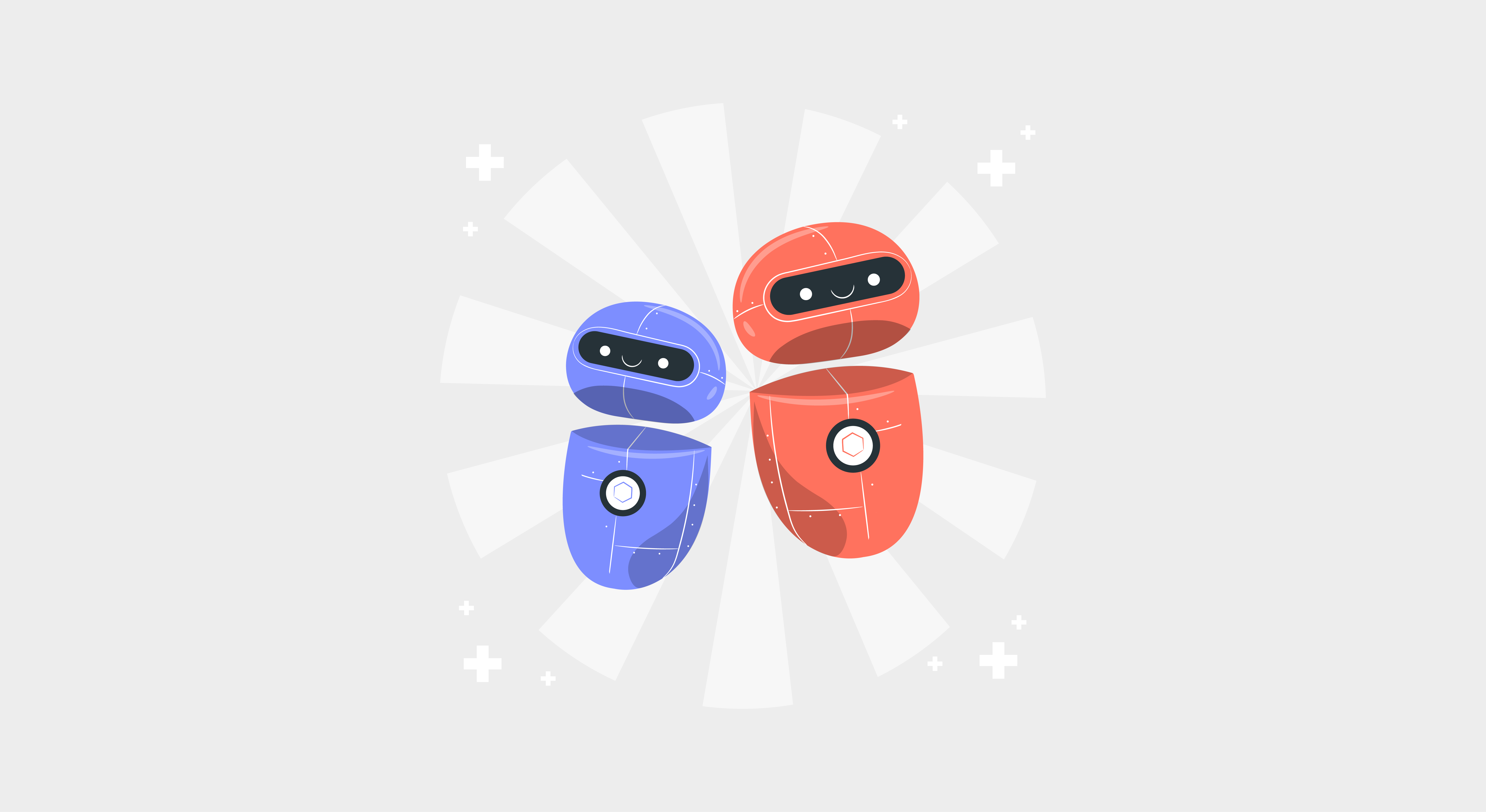We interact with chatbots daily—from booking flight tickets on a mobile app to receiving technical help. They’re almost as ubiquitous as humans. This technology helps businesses grow, receive positive feedback, and build a satisfied customer base.
Chatbots are faster, provide great functionality, and have many ups on humans, but how “human” are they? And more importantly, how human should they be?
Why do we need to humanize our chatbots?
The advances in ux design and technology, like improved AI, machine learning and NLP, assure us that chatbots can replicate myriad human interactions and functions. Where bots sometimes lack is in finding the right balance of personalization. Irrespective of whether they are handling FAQs or answering more complex questions, they have to maintain a tone that is neither too robotic nor too human.
Your chatbot is more than just an algorithm. To maintain and enhance customer satisfaction, you have to ensure that these artificial conversations have the allure of real human interactions with empathy, humor, and apt reactions. This is a few steps ahead of just using the right words and having impeccable language. Humanizing the bots can make them more relatable, relevant, and reliable.
Your chatbot is more than just an algorithm. They can affect the customer’s perception of you.
Chatbots can affect the customer’s perception of you. So, despite the advancements in bot technology, identifying the agent as human raises expectations for interactivity. But not too human that it irks customers. That’s why it is important not to lead such conversational user interfaces with an overly human tone that might be perceived as deceiving.
How can we humanize our chatbots?
Ways to humanize your chatbot
- Assign a Personality to your Chatbot
- Design the Chatbot for your Customers, Not the Company
- Maintain Contextual Understanding
- Have a Sense of Humor
- Enhance your Chatbot’s Emotional Quotient (EQ)
- Create a Conversation Flow
1. Assign a Personality to your Chatbot
If your bot took a personality, what would it be like? Would it be chatty or matter-of-fact, funny or serious? A good place to start if you want to humanize your bot is to define what you would like your customers to feel when they engage with the bot. A personality, coupled with a name that reflects your brand’s values, can help eliminate the cold association with bots and adds flesh to your brand’s otherwise ambiguous idea. You can read more on our blog on how to build chatbots with a personality.
However, it is best to draw the line before we get to giving our bot a real person’s face to avoid seeming deceptive and to prevent the trap of uncanny valley.
2. Design the Chatbot for your Customers, Not the Company
Don’t get into bots with the sole purpose of making sales or converting customers. Instead, ask questions to understand what the end users need so you can gather information and provide a contextual experience. If your design process tries to accommodate the users in a framework that is built based only on your brand’s needs, you’re probably doing it wrong. Leverage Natural Language Processing (NLP) to make your bot more realistic and dialect-aware.
Remember that if you are trying to make a chatbot human-like, it should sound like one. The trick to achieving that is leveraging NLP technologies in tandem with human-inspired conversational design. Make your bot converse and react like your customers by avoiding stock or unnatural phrases. Using colloquial language, addressing users by their name, as a friend would, and offering casual greetings and quips is also proven to make users comfortable enough to convert.
3. Maintain Contextual Understanding
A big part of any conversation with a human is that they can understand, remember, and bring up information in real-time. So, it is naturally vital for a bot to reflect the same capability to appear human. With your bot’s higher cognitive ability comes higher machine empathy, more engagement with customers, and eventually, better customer support.
However, understanding what the customer conveys is great, but being able to gauge dynamic context is even better. Your bot should be able to intimately comprehend the user needs in varied use cases to create personalized responses, facilitating a comfortable customer journey.
4. Have a Sense of Humor
Humans are interesting and comfortable to converse with because we possess a sense of humor. This human-like trait is a must-have if you want to improve your chatbot experience. The trick here is to use humor appropriately such that it aids your cause without sounding offensive or deviating from your tone of voice. Using humor to break the ice as you’re trying to get to know the customer is a great place to start since it builds your bot’s personality and helps create relationships. Siri is a great example of how you can include humor in your conversations.

However, adding humor might not work for all brands. For instance, a medicine delivery bot can not afford to be humorous. You must remember that humor is subjective and should be used with caution only when it can improve the customer experience.
5. Enhance your Chatbot’s Emotional Quotient (EQ)
Bots today are capable of so much and are truly intelligent. But when a bot tries to mimic a human, it must match its artificial intelligence with emotional comprehension. Depending on your brand, there are various ways you can up the EQ of your bot.
One way you can do that is by utilizing emojis, gifs, and images. Using media in your conversation is a great way for your bot to express emotion better and create a relationship with your customers. A bot should always be able to converse in media and understand it when a customer uses it. And it is equally important for the bot to gauge and utilize the voice and tone of the customer to have emotional capabilities.
6. Create a Conversation Flow
Humans are adept at filling silences, and your bots should have the same capability of using the right filler words. This will humanize the user experience and make your customers feel at home with your brand. This could be achieved with simple conversation design techniques like using pre-defined templates where appropriate and programming a latency in responses. Even using UI elements like typing indicators are a good technique. It is also important to employ a regularly analyzed and optimized decision tree to make the most of your efforts.
Additionally, any conversation is a two-way street. If your bot dominates or underplays its role in an exchange with a customer, it is probably not accomplishing its target. Any conversation or UX designer knows that a chatbot conversation strategy is successful when the chatbot knows what to say, when to say, and how much to say.
Chatbots should be human, but not too human
While there is no debate on the idea that a bot needs to sound realistic, we need to be cautious about how human we want our bots to sound and where we draw a line in our quest to make bots human-like. If your bot cannot answer a query, it is best to have a human agent as a fallback option.
At the end of the day, we need to keep in mind that irrespective of who you are as a business or brand, the entity on the other side of the messaging window is almost always a human. Humanizing your bot will add tremendously to your business by creating an emotional connection between the user and your brand. Learn more about how you can leverage conversational AI technology to create a human-centric brand with an impeccable conversational experience by booking a demo with our product specialists.








